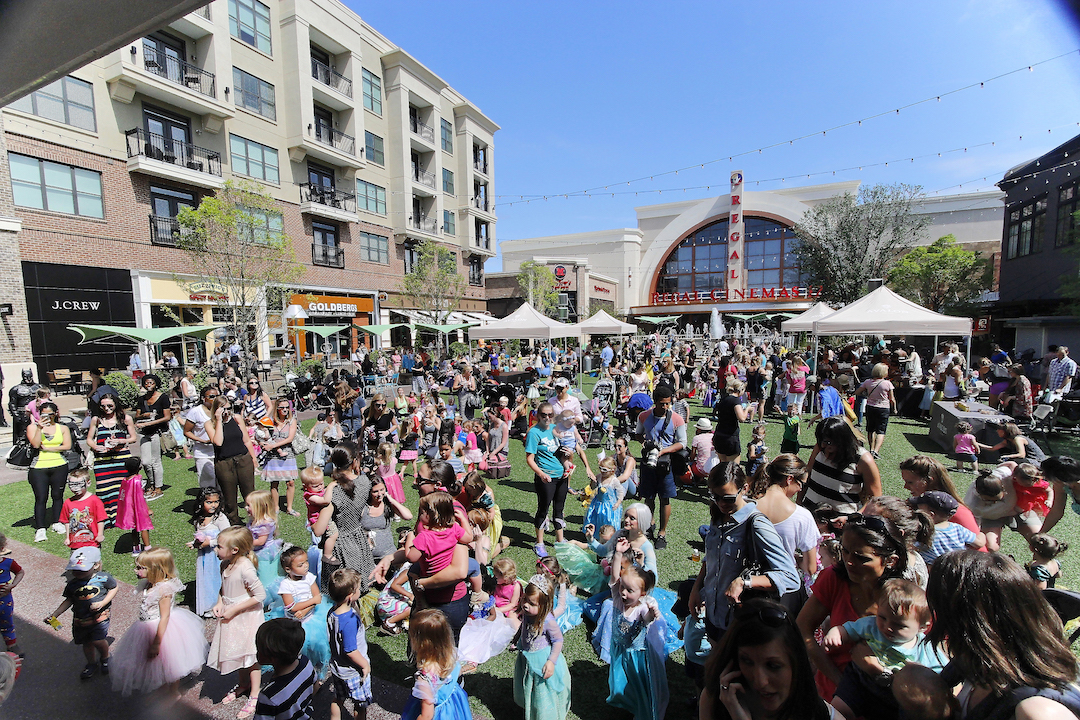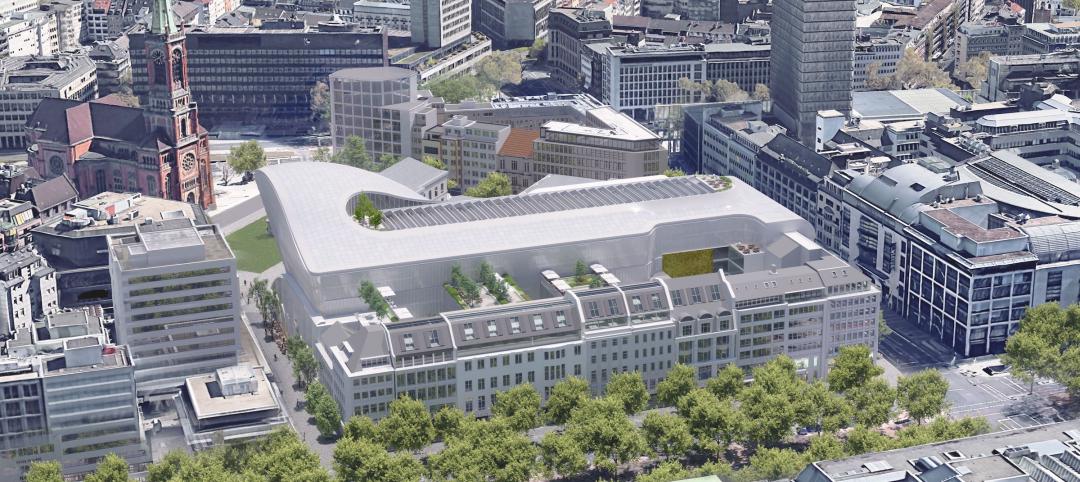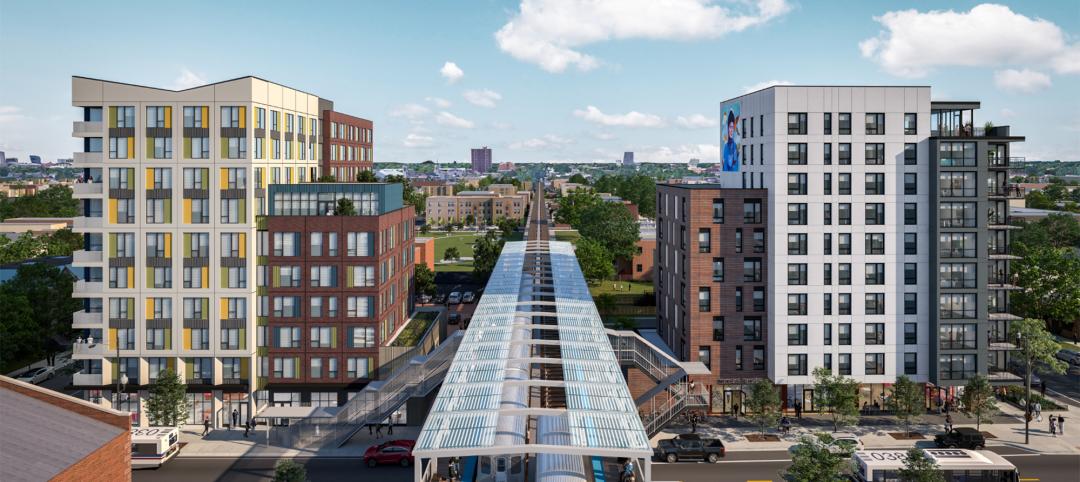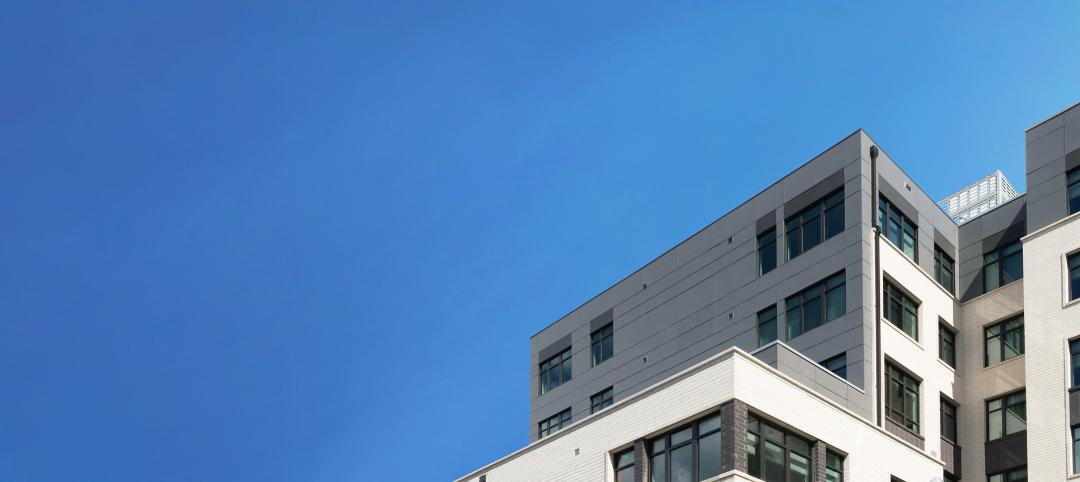While it will always be the tenants that bring traffic to a development, the real challenge for developers is keeping the traffic on-site for an extended period of time, creating opportunities for both cross-shopping and guest engagement.
Increasing dwell time has been a primary focus of developers and tenants alike given the fact that when customers linger, they spend more. According to a study by Path Intelligence, increasing dwell time by just 1% leads to an average 1.3% increase in sales, and for tenants that can add up.
Developers can add value by activating underutilized space to increase guest interaction and introduce programming and placemaking to keep consumers engaged. Building façades, alleyways, and even parking lots (once thought of as dead space) can all be repurposed to not only differentiate your property, but allow for a more memorable connection with guests.
Here are five ways to activate ‘dead space’ in mixed-use developments
1. Celebrate the destination. By understanding the unique location and target consumers, developers can find opportunities to bring a local connection to the forefront. Consumers organically form stronger bonds with destinations they feel they can relate to on a personal level. Developers should leverage this opportunity to identify meaningful symbols or touchpoints that bring the unique community to life.
From commissioning a local artist to activate a parking garage wall, to implementing a regional hobby like cornhole outside a food court, there are opportunities to make a more meaningful connection with local shoppers, so it doesn’t just feel like “a shopping center”—it feels like “their shopping center.”
2. Make space functional. Provide guests with opportunities to become immersed in the experience, through touch, trial, and play. Anytime you can allow for interactive experiences you are no longer offering just products, you are engaging consumers and creating more reasons to visit. For example, turning a building façade into a rock-climbing wall or carving out space for a dog park gives the property robust lifestyle offerings that can benefit both the shopper and the tenants.
A development that offers guests both product and meaningful services is more likely to thrive as some legacy retailers struggle to adapt to the changing industry. Leveraging space for engaging programming, activities, and events will continue to bring guests to your property.
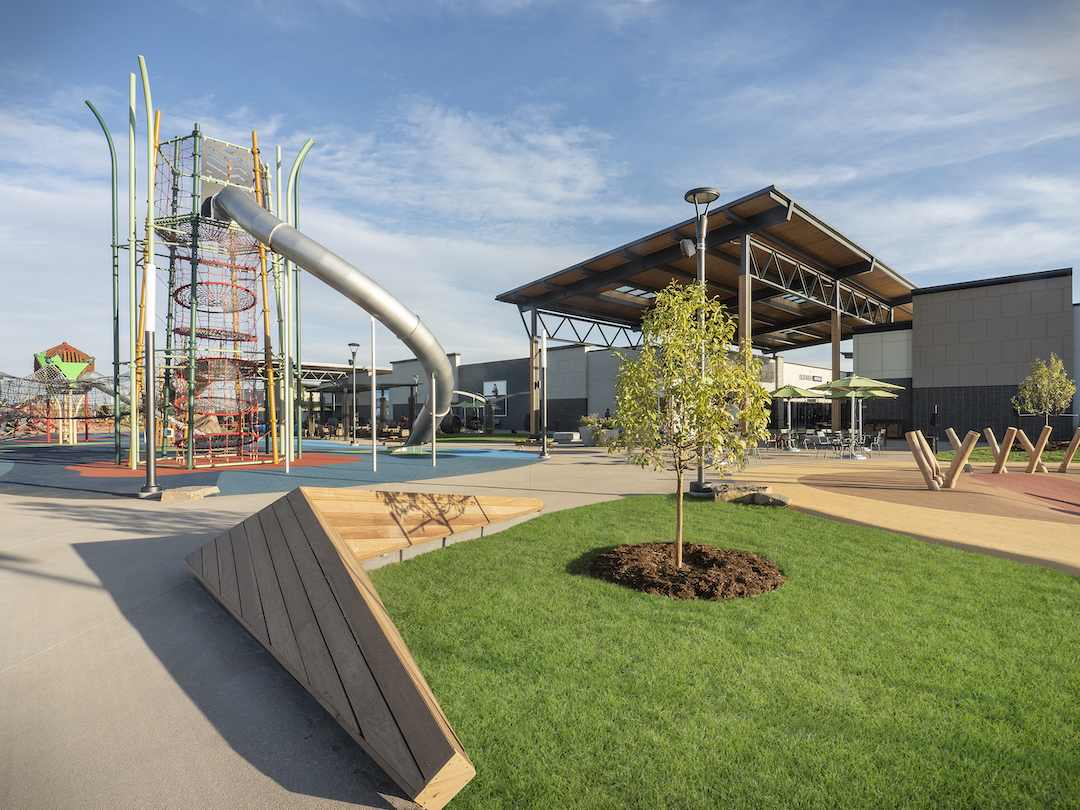
 Arts, entertainment, and placemaking spaces at the Denver Premium Outlets in Thornton, Colo. Photos: Tim O’Hara Photography
Arts, entertainment, and placemaking spaces at the Denver Premium Outlets in Thornton, Colo. Photos: Tim O’Hara Photography
3. Tell the brand story. Walls should never just be walls—they are a foundation to personalize a development and engage your guests in your unique brand story. Your brand can no longer live just on the pylon. There should be touchpoints and winks to the brand throughout the space, from wayfinding to doorknobs. Every inch of your environment is a chance to introduce your brand voice to your guest.
Consider ways to demonstrate your brand through non-graphic/non-obvious decisions, as well. Does your brand have a focus on sustainability? Perhaps you leverage biophilic design to represent this. Are you more about creating community? Consider seating fixtures and furnishings that encourage gathering. By bringing their brand to life, developers have a chance to make a big emotional connection, with a small investment.
4. Leverage the parking lot. With the rise of car-sharing programs, developers will have more open parking space than ever before and should find ways to re-purpose that valuable square footage. Identifying opportunities to better leverage this space, both functionally and aesthetically, is vital.
Create dedicated click-and-collect parking spaces or BOPIS (buy online pickup in store) drive-through lanes to differentiate your development. Store pick-ups accounted for nearly a third of U.S. online sales last November and December, up from 22% just a year earlier, according to GlobalData Retail. These offerings would keep development traffic efficient and customer satisfaction high. And providing experiential offerings—food trucks, farmers markets, movie nights—in overflow parking spaces will keep the experience fresh to increase return visits.
5. Tell the local story. Find the story behind the site and tell it in a meaningful way to further enrich the customer experience. Stories of our history come in various shapes and sizes: notable property owners, history of the town, fun facts, etc.
A recent project in downtown Cincinnati leveraged underutilized sidewalks to tell the region’s rich brewing history through a series of wayfinding and graphic installations. Through rich storytelling and impactful graphics, this urban trail takes visitors and residents alike on a historical journey of adventure and discovery, in an area that was previously undervalued. Developers can take the same approach, identifying underutilized space on their property and bringing it to life by adding a layer of environmental graphics, placemaking, or storytelling.

 The Brewing Heritage Trail in Cincinnati leveraged underutilized sidewalks to tell the region’s rich brewing history through a series of wayfinding and graphic installations. Photos courtesy Prus Construction
The Brewing Heritage Trail in Cincinnati leveraged underutilized sidewalks to tell the region’s rich brewing history through a series of wayfinding and graphic installations. Photos courtesy Prus Construction
From parking lots to branded moments, dog parks to local art, people are seeking new, enjoyable experience. Find those moments of wow that engage customers on a deeper level, creating enjoyment and reasons to come back. Find opportunities to create social media moments, impactful design that people want to share. Most of all, have fun with leftover spaces. Take your guests on unexpected experiences by simply rethinking the space between.
About the Author
John Moores is the Director, Mixed Use with NELSON Worldwide. He provides oversight to meet client objectives nationwide, contributing a decade of expertise in delivering large, complex projects for well-known national brands, such as PNC, Synovus, Whole Foods, and GM. An expert in placemaking, Moores worked on retail, office, hospitality, and residential projects to create community-centered destinations driven by user experience.
NELSON is an award-winning firm delivering architecture, interior design, graphic design, and brand strategy services that transform all dimensions of the human experience, providing our clients with strategic and creative solutions that positively impact their lives and the environments where they work, serve, play, and thrive. Visit www.nelsonworldwide.com to learn more.
Related Stories
Contractors | Apr 10, 2023
What makes prefabrication work? Factors every construction project should consider
There are many factors requiring careful consideration when determining whether a project is a good fit for prefabrication. JE Dunn’s Brian Burkett breaks down the most important considerations.
Mixed-Use | Apr 7, 2023
New Nashville mixed-use high-rise features curved, stepped massing and wellness focus
Construction recently started on 5 City Blvd, a new 15-story office and mixed-use building in Nashville, Tenn. Located on a uniquely shaped site, the 730,000-sf structure features curved, stepped massing and amenities with a focus on wellness.
Affordable Housing | Mar 14, 2023
3 affordable housing projects that overcame building obstacles
These three developments faced certain obstacles during their building processes—from surrounding noise suppression to construction methodology.
Mixed-Use | Mar 11, 2023
Austin mixed-use development will provide two million sf of office, retail, and residential space
In Austin, Texas, the seven-building East Riverside Gateway complex will provide a mixed-use community next to the city’s planned Blue Line light rail, which will connect the Austin Bergstrom International Airport with downtown Austin. Planned and designed by Steinberg Hart, the development will include over 2 million sf of office, retail, and residential space, as well as amenities, such as a large park, that are intended to draw tech workers and young families.
Sports and Recreational Facilities | Feb 27, 2023
New 20,000-seat soccer stadium will anchor neighborhood development in Indianapolis
A new 20,000-seat soccer stadium for United Soccer League’s Indy Eleven will be the centerpiece of a major neighborhood development in Indianapolis. The development will transform the southwest quadrant of downtown Indianapolis by adding more than 600 apartments, 205,000 sf of office space, 197,000 sf for retail space and restaurants, parking garages, a hotel, and public plazas with green space.
Retail Centers | Feb 24, 2023
Santiago Calatrava unveils plans for a luxury retail and office complex in Düsseldorf, Germany
Renowned architect and engineer Santiago Calatrava, along with the CENTRUM Group, has unveiled plans for Calatrava Boulevard, a luxury retail and office complex in Düsseldorf, Germany. Running parallel to Königsallee and connecting with the Steinstrasse station, Calatrava Boulevard will incorporate and connect to the boulevard’s existing buildings.
Mixed-Use | Feb 23, 2023
7 mixed-use developments that don't sacrifice housing affordability
Here are seven mixed-use, multifamily projects dedicated to providing affordable housing.
Multifamily Housing | Feb 21, 2023
Watch: DBA Architects' Bryan Moore talks micro communities and the benefits of walkable neighborhoods
What is a micro-community? Where are they most prevalent? What’s the future for micro communities? These questions (and more) addressed by Bryan Moore, President and CEO of DBA Architects.
Multifamily Housing | Feb 16, 2023
Coastal Construction Group establishes an attainable multifamily housing division
Coastal Construction Group, one of the largest privately held construction companies in the Southeast, has announced a new division within their multifamily sector that will focus on the need for attainable housing in South Florida.
Affordable Housing | Feb 15, 2023
2023 affordable housing roundup: 20+ multifamily projects
In our latest call for entries, Building Design+Construction collected over 20 multifamily projects with a focus on affordable housing. Here is a comprehensive list of all projects in alphabetical order.


